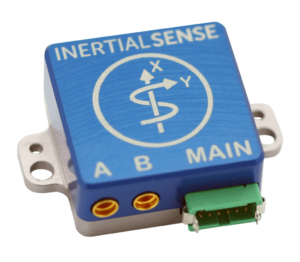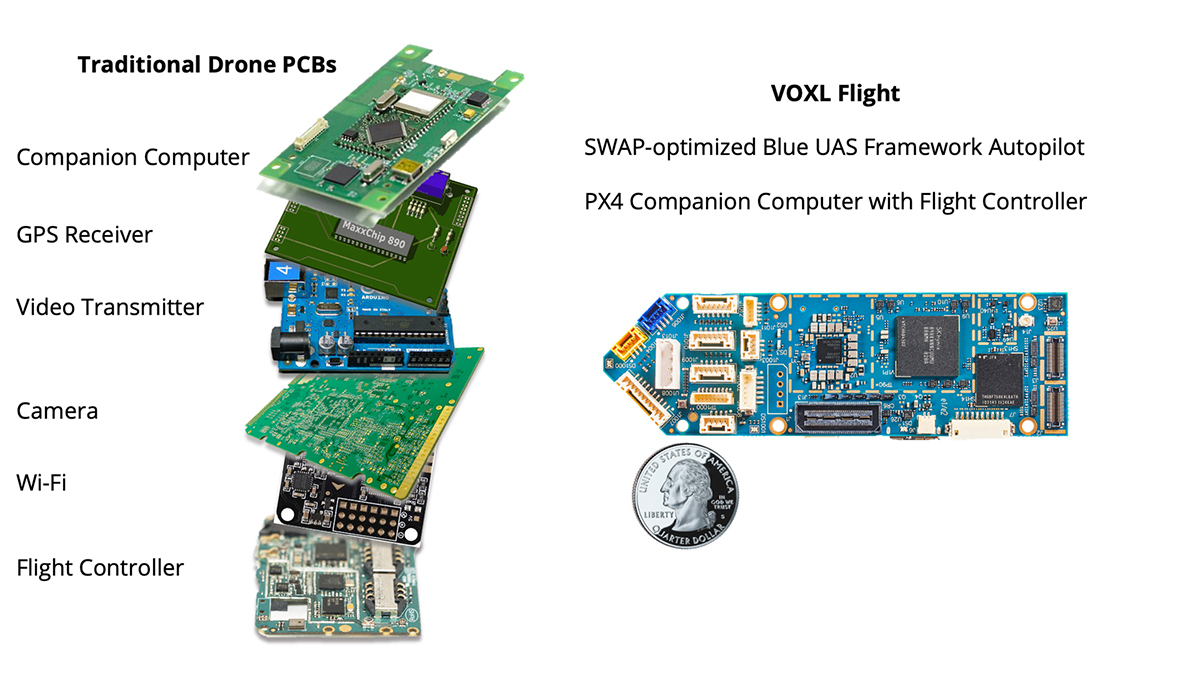Unmatched Accuracy: SparkNavi Drone Flight Controller and GNSS/INS Made in Taiwan
Unmatched Accuracy: SparkNavi Drone Flight Controller and GNSS/INS Made in Taiwan
Blog Article
Discovering the Duty of Drone Trip Controllers in Enhancing Flight Stability and Navigation Effectiveness
The improvement of drone innovation has considerably boosted the relevance of trip controllers, which function as the brain of these airborne cars. By integrating real-time data from a range of sensors, flight controllers improve trip security and navigation efficiency, ensuring that drones can operate efficiently even in complicated environments. This conversation will certainly explore the vital parts that contribute to these renovations, in addition to the implications for the future of autonomous trip. What innovations exist in advance that could additionally transform the abilities of drone flight controllers?

Understanding Flight Controllers
Trip controllers are integral components in the functioning of drones, working as the brains that take care of and support flight operations. These innovative devices process information from different sensors, including accelerometers, gyroscopes, and GPS, to guarantee that the drone preserves its designated flight path. The flight controller interprets this data and executes commands based on pre-defined formulas, making it possible for the drone to react to ecological adjustments, such as wind or barriers.
The main function of a flight controller is to maintain security during flight. It achieves this by making real-time adjustments to the drone's electric motors and control surface areas, making certain equilibrium and control. Furthermore, contemporary flight controllers include innovative functions such as waypoint navigation, enabling automated trip courses and boosted operational effectiveness.
Comprehending the design of trip controllers is important for both hobbyists and experts. As innovation advancements, trip controllers have come to be much more portable and capable, integrating fabricated intelligence to adapt and boost decision-making processes to intricate flight circumstances.
Secret Components of Trip Security
Accomplishing ideal trip stability in drones counts on a number of vital elements that work in show to guarantee controlled and smooth operations. Central to this security is the flight controller itself, which processes information from numerous sensors to preserve the wanted trip perspective. This includes accelerometers and gyroscopes that measure movement and alignment, permitting real-time adjustments to the drone's position.
Another important part is the digital rate controllers (ESCs), which manage the power supplied to the electric motors. By carefully adjusting electric motor rates in reaction to flight controller commands, ESCs help keep balance and combat disruptions triggered by wind or abrupt activities.
Additionally, the design of the drone's structure plays a critical role in flight stability. A well-structured frame decreases vibrations and boosts the total wind resistant account, adding to smoother trip features. The integration of innovative algorithms within the trip controller aids in predictive changes, making certain a adaptable and receptive trip experience.
Together, these components create a cohesive system that boosts a drone's stability, permitting exact handling and enhanced efficiency in numerous flight problems.
Navigating Efficiency Strategies
Effectiveness in navigation is essential for enhancing drone procedures, particularly in intricate atmospheres. Effective navigating techniques boost the ability of drones to go across difficult surfaces and prevent barriers, consequently improving functional efficiency and safety and security.
One famous technique is the execution of advanced general practitioners and inertial measurement systems (IMUs) that give accurate area monitoring and positioning information. These technologies permit drones to compute optimal flight courses in real-time, considering different variables such as wind conditions and possible barriers.
One more strategy involves the usage of algorithms for path preparation and optimization. Algorithms such as A * and Dijkstra's formula can be deployed to establish one of the most efficient path while decreasing energy usage and trip time. Incorporating machine knowing designs can make it possible for drones to adaptively find out from their environments, improving navigation abilities with experience.

Effect On Autonomous Drones
The assimilation of advanced navigation techniques has profoundly transformed the abilities of autonomous drones, enabling them to operate with better freedom and accuracy. SparkNavi drone flight controller and GNSS/INS made in taiwan. These enhancements are primarily credited to innovative flight controllers that utilize real-time data processing and sensor fusion, allowing drones to navigate complex environments seamlessly
The effect on independent drones prolongs beyond plain navigation; it incorporates boosted obstacle avoidance, enhanced stability throughout vibrant conditions, and enhanced mission reliability. By leveraging algorithms that integrate artificial intelligence and expert system, drones can adjust to altering situations, making notified choices that optimize their trip courses while minimizing dangers.
In addition, the execution of durable trip controllers has helped with the implementation of intricate jobs, such as aerial assessments, distribution solutions, and agricultural tracking, with minimal human intervention. This capacity not only improves operations yet likewise lowers human error, consequently enhancing total security.
Consequently, the operational scope of self-governing drones has actually expanded substantially, making them indispensable devices in different industries. Their capability to execute efficiently in diverse circumstances highlights the critical function that advanced trip controllers play fit the future of unmanned aerial systems.
Future Patterns in Flight Control
Regularly, developments Discover More in flight control technology are poised to redefine the landscape of drone procedures in the coming years. Arising trends suggest a substantial shift towards improved expert system (AI) combination, making it possible for flight controllers to process real-time data extra efficiently. This evolution will help with better decision-making capabilities, enabling drones to adjust to vibrant environmental problems autonomously.
Moreover, the application of device discovering formulas is anticipated to improve anticipating upkeep, thereby reducing downtime and prolonging the lifecycle of drone elements. This aggressive strategy to upkeep will certainly be important as drone applications increase throughout numerous sectors, from farming to logistics.

.jpg)
Last but not least, innovations in secure interaction methods will deal with security and check it out regulative worries, making certain that drones can run flawlessly in congested airspaces (SparkNavi drone flight controller and GNSS/INS made in taiwan). Collectively, these trends point towards a future where flight control systems are not only smarter and more also capable but reliable of running securely in a significantly have a peek at this website integrated airspace
Verdict
Finally, drone flight controllers are integral to improving flight security and navigating effectiveness via the sophisticated processing of sensing unit information. By maintaining optimal flight mindsets and using innovative algorithms for path optimization and challenge evasion, these controllers dramatically contribute to the freedom and operational safety of drones. As innovation proceeds to advance, better advancements in flight control systems are expected, assuring improved performance and expanded capabilities in the realm of unmanned aerial cars.
By integrating real-time data from a variety of sensing units, trip controllers improve flight stability and navigation effectiveness, making sure that drones can operate smoothly even in complex environments.Trip controllers are integral parts in the performance of drones, offering as the minds that handle and support flight operations. In addition, modern-day trip controllers integrate sophisticated functions such as waypoint navigating, enabling for automated flight paths and enhanced operational performance.
Central to this security is the trip controller itself, which processes data from numerous sensors to keep the wanted flight attitude.In verdict, drone flight controllers are essential to enhancing flight security and navigation effectiveness via the advanced handling of sensing unit information.
Report this page